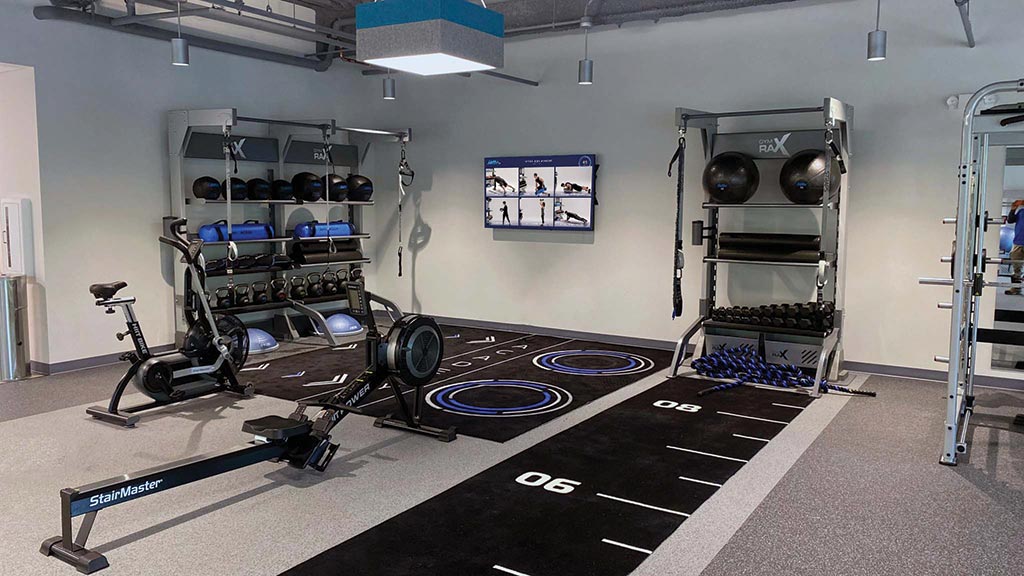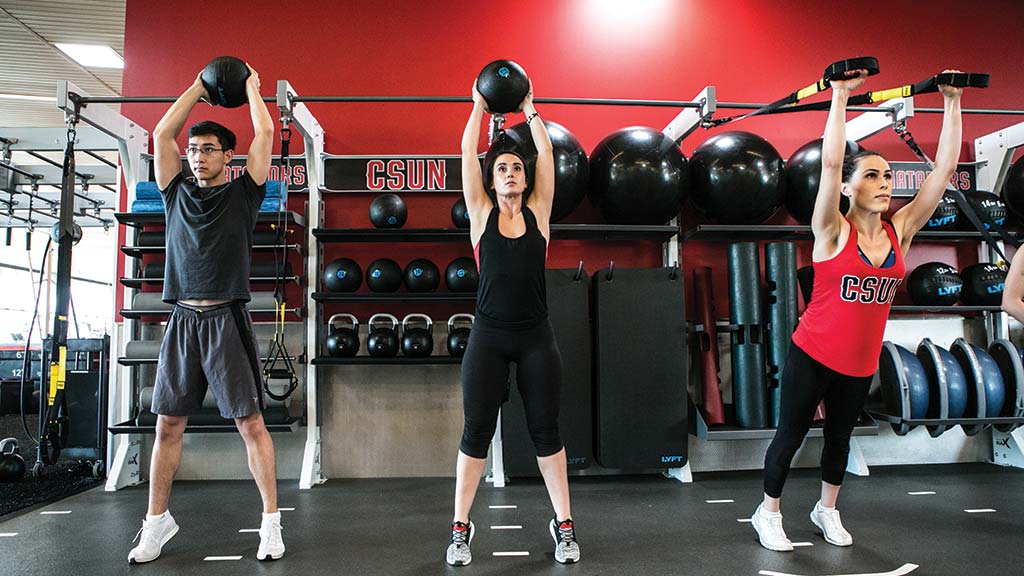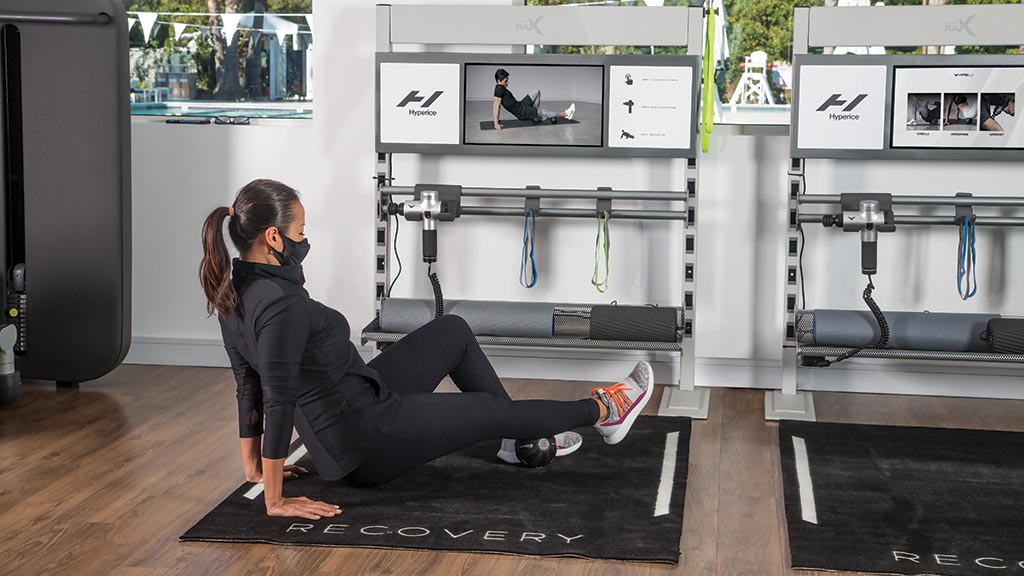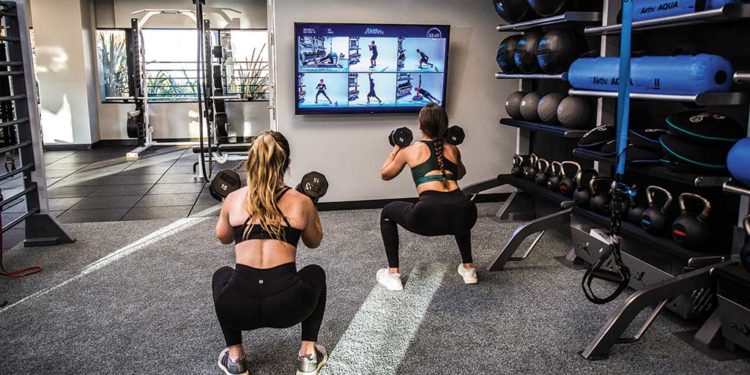Functional fitness is training that readies the body for our daily activities, and it’s a massively growing trend.
However, this type of training planning requires more than what kind of fitness equipment is used, which is something Aktiv Solutions understands.
As a full-service functional design firm, the company’s approach is fundamentally different from others out there. “Whereas equipment companies are rightfully rooted in developing their products, Aktiv is rooted in the design development of our clients’ exercise spaces,” explained Andrew Gavigan, the director of education at Aktiv Solutions. “This progression of experience development is essential to achieving differentiated outcomes and what we do best. Our team is comprised of specialized architects, functional design consultants and fitness experts. This disciplined and professional approach leads to fresh results and sustainability in design.”
Aktiv incorporates leading architectural and interior design principles with the latest in exercise trends and equipment solutions. Functional design specialists work to create spaces that elicit high user engagement.
But it doesn’t stop there in finding the balance of trends and technology. With a specialty in behavior and behavior change, Gavigan joined Aktiv in 2018. He is a 16-year veteran trainer in the industry. And, he has been keeping tabs on changes in the fitness world.
EXTRA CREDIT: Utah State University’s Aggie Recreation Center has found Aktiv Solutions’ Gym Rax Storage and Suspension system holds up over time.
One of those is a decrease of big, bulky cardio equipment. “Managers and directors aren’t removing all treadmills and ellipticals. But, they are decreasing their cardio machines in some cases by as much as 25%, according to trend reports from various industry groups,” said Gavigan.
But, as the demand for functional training increases the above trend has actually been helpful. Gavigan shared by removing cardio equipment, there is more space for functional training. The 18 square feet that a treadmill can take up is then open to more options and better individual outcomes.
“Sometimes it’s about creating more space,” said Gavigan. “Out with the old and in with the new. Creating functional areas with proper flooring and digital guidance can increase the amount of useable space for a rec center’s community to work out and see results.”

In fact, Aktiv knows a thing or two about well-defined areas. Whether it’s through its new Recovery Bays system — which includes smart storage, Hyperice technology, integrated charging and a digital kiosk — or its industry-leading Apogee Suspension Bays — which allow for dynamic and novel changes without the high costs of new equipment — Aktiv has created solutions to create more space without having to renovate or build a new facility. As Gavigan said, sometimes simply changing the layout as trends change is powerful for users.
EXTRA CREDIT: The new recovery space at the Claremont Club & Spa serves as an example of a growing trend that campus recreation should pay attention to.
In fact, smart design and equipment choices can get more students, faculty and staff into your facility. Gavigan shared several options campus rec professionals can look at:
- “Having the right piece of equipment is merely the first step. A kettlebell isn’t living up to its value unless someone picks it up. Creating a space that is functionally accessible with all the right tools and the room to perform dynamic movements matters, too.”
- “Store everything in its proper place and ensure it’s easy to find. The area should be clean and inviting. The movement space needs to be clearly defined. And, participants need to have enough space to feel comfortable, yet still be part of the group community.”
“The space also needs to be perceptually approachable. No complicated storage procedures, easy and intuitive guidance, and a variety of both novel and recognizable exercise equipment.”
“Finally, spaces that can flex to facilitate multiple trending modalities will stand the test of time.”
EXTRA CREDIT: CSUN partnered with Aktiv Solutions in order to bring their vision of a Functional Playground to life.
But, even with the perfect spaces for users to come and get their functional fitness on, the biggest barrier Gavigan has seen is people don’t know what to do for a workout. “As we decrease barriers — such as making wellness facilities more affordable and closer to home, work or campus — we still need to provide guidance,” he said. “Fitness professionals are valuable here, but we can support or even supplement that by providing digital guidance. Simple, intuitive and easy-to-access guidance can also help to ensure a safer environment.”

As such, Gavigan shared four best practices for campus recreation professionals to keep in mind when it comes to creating a welcoming functional fitness space:
- “Begin with the experience you want to create, and then design and add products to facilitate that.”
- “Make sure the space is physically approachable for all. This means there is enough space to accommodate different modalities and movement styles. Plus, there are zones that are intuitive in terms of use, and the right balance of accessories, products and open areas is on point.”
- “Be mindful of future shifts in trends. Design and build toward being easily able to flex and accommodate.”
- “And finally, communicate and share the values of the space to faculty and students. Use this messaging to drive engagement.”
Just like users need guidance on their workouts in the functional training space, Aktiv is there to provide guidance to campus recreation professionals on how to provide the best designed and outfitted space possible. All in all, Aktiv’s amplification of functional training spaces is creating inspiration and engagement that will continue to fuel the success of campus recreation departments everywhere.

For more information, aktivsolutions.com.










